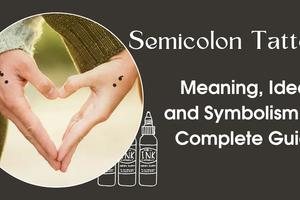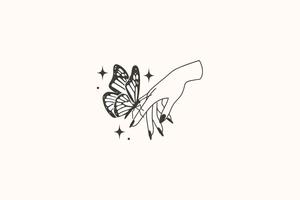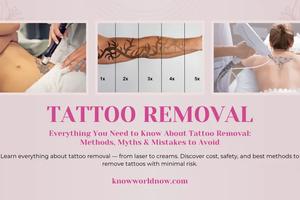Henna Tattoo: Complete Guide to Designs, Meaning, Aftercare & Safety

Key Takeaways
Essential insights to remember
Henna tattoos are ancient, meaningful, and temporary body art traditions.
Designs hold cultural symbolism, from luck and love to protection.
Proper aftercare ensures vibrant, long-lasting results.
Avoid black henna with PPD to prevent severe allergic reactions.
Learning henna art at home is accessible with practice and safe materials.
✨ Introduction: The Timeless Art of Henna Tattoos
Henna tattoos, also known as mehndi in South Asia, represent an ancient art form steeped in tradition, culture, and personal expression 🌿✨. Unlike permanent ink tattoos that penetrate the skin with needles, henna offers a natural, pain-free, and temporary way to adorn the body. From ornate bridal designs in India and Pakistan to celebratory patterns during Eid and Diwali, this art transcends borders, embodying luck, love, and spiritual blessings. Today, henna tattoos are celebrated not just for their striking beauty, but also for their rich history and cultural significance—a living testament to humanity's shared artistry and storytelling.
““💬 “Henna is not merely a design; it’s a narrative of heritage, celebration, and personal meaning.”
🧭 Tip: Before getting a henna tattoo, it’s important to understand not just the aesthetic appeal but also its origins and cultural importance to ensure respectful appreciation.
🌿 What Is a Henna Tattoo? Origins and Meaning
A henna tattoo is a temporary body art created using a natural dye made from the dried, powdered leaves of the Lawsonia inermis plant. The term henna itself has Arabic origins (حِنَّاء, pronounced ḥinnāʾ), while in South Asia it’s known as mehndi (मेहँदी / مہندی). Used for millennia in places like Ancient Egypt, India, and the Middle East, henna carries profound cultural and spiritual symbolism.

Henna designs often represent:
- 🍀 Luck and Blessings: Bestowing good fortune on the wearer.
- 💕 Love and Union: Essential in wedding ceremonies, where intricate patterns celebrate commitment.
- 🧿 Protection: Designs like the Evil Eye ward off harmful intentions.
- ✨ Joy and Celebration: Applied during festivals such as Eid, Diwali, Karva Chauth.
““🗣️ “Henna is both an art form and a ritual—its patterns convey hope, joy, and cultural identity.”
⚡ Note: True henna only produces shades ranging from orange to deep reddish-brown. Beware of so-called "black henna," which may contain harmful chemicals like PPD.
🌍 The Cultural Significance of Henna Around the World

Henna is far more than a decorative art—it’s a cultural ritual woven into the fabric of societies from South Asia to North Africa. In India and Pakistan, Mehndi Nights are pre-wedding celebrations where brides, family, and friends gather to apply henna while singing traditional songs and sharing blessings. In Morocco, henna ceremonies can span days, with symbolic motifs painted on the bride’s hands and feet to ward off evil spirits.
Across the Middle East, henna is applied during religious festivities like Eid al-Fitr and Eid al-Adha, while in North African countries such as Algeria and Tunisia, it marks the transition from single to married life. Even in places like Afghanistan, henna is believed to bring good luck and happiness during events like Nawroz (Persian New Year).
““💡 Cultural Note: Henna is not merely body art but a sacred tradition symbolizing blessings, protection, and transformation. Using it respectfully means recognizing its cultural roots and avoiding superficial appropriation.
📌 Emoji Highlights:
👰♀️ Bridal blessings
🌙 Eid celebrations
🎉 Birthdays and milestones
🛡️ Spiritual protection
🧪 How Is Henna Made and Applied?

The journey from leafy plant to exquisite body art is a testament to henna’s organic craftsmanship. 🌿 The henna plant (Lawsonia inermis) is harvested, dried, and finely ground into a powder that holds the natural dye molecule lawsone, responsible for its rich reddish-brown stain.
To create the paste:
- Henna powder is mixed with acidic liquids like lemon juice to release dye.
- Sugar improves texture and stickiness, ensuring better skin contact.
- Essential oils (e.g., tea tree, lavender) enhance color depth and add pleasant aromas.
- The paste rests for up to 48 hours to maximize dye release.
Once ready, artists apply the paste using:
- 🎨 Cones (similar to icing bags) for fine lines.
- 🪡 Sticks or twigs for traditional methods.
- 💉 Syringes (common in Morocco) for precision.
““💬 “The artistry lies as much in the paste’s preparation as in the hand that applies it.”
🌟 Pro Tip: Seal freshly applied designs with a lemon-sugar solution to keep the paste moist and allow deeper dye penetration for darker, longer-lasting stains.
🎨 Henna Tattoo Designs and Their Meanings
Henna designs are not mere decorations—they’re visual stories imbued with deep cultural and personal symbolism. Across traditions, certain motifs have emerged as iconic favorites, each carrying distinct meaning and beauty.

🌺 Popular Motifs and Their Significance:
- 🌸 Flowers & Lotus: Beauty, new beginnings, grace, and purity.
- 🦚 Peacock: India’s national bird; symbolizes beauty and prosperity.
- 🌙 Paisley (Mango Shape): Fertility, luck, and classic South Asian artistry.
- 🧿 Evil Eye: Protection from negative energies.
- 🕉️ Om Symbol: Spiritual connection, universal consciousness.
- 🪻 Vines & Leaves: Longevity, resilience, natural cycles.
- 🐍 Snakes & Lizards: Seekers of enlightenment, transformation (less common but culturally meaningful in some regions).
- 🔵 Circles & Mandalas: The cycle of life, unity, and fulfillment.
““🗣️ “Every line and curve in henna is intentional, reflecting hopes, blessings, and ancestral wisdom.”
🌍 Regional Styles:
- 🇲🇦 Moroccan: Geometric, tribal, often gender-neutral.
- 🇵🇰 Pakistani: Dense florals with religious symbols like domes and mosques.
- 🇸🇦 Arabic: Bold, flowing lines with open spaces—elegant and minimalist.
- 🇮🇳 Indian: Extremely intricate, covering hands and feet with story-like scenes.
““🧭 Tip: Share your vision with your artist—they can tailor traditional designs to your personal story while honoring cultural roots.
⏳ How Long Does a Henna Tattoo Last?
One of henna’s enduring charms is its ephemeral beauty. Unlike permanent ink tattoos, henna stains the top layers of skin, naturally fading as the skin exfoliates. Typically, you can expect your design to last one to three weeks, depending on multiple factors.

🧭 Factors Affecting Longevity:
- Placement: Hands and feet absorb dye more deeply (last longer, darker).
- Skin Type: Dry skin may cause faster exfoliation.
- Aftercare: Proper sealing and avoiding water early on extend the stain’s life.
- Exposure: Frequent washing, chlorine, and soaps speed up fading.
““💬 “Henna stains evolve over time—from bright orange to deep reddish-brown as they oxidize.”
📌 Quick Timeline:
- First 24 hours: Fresh stain may appear orange.
- Days 2–3: Oxidizes into rich mahogany brown.
- Weeks 2–3: Gradual fading as skin renews.
⚡ Note: The stain's final color depends on quality of henna paste, preparation, and how long the paste remains on the skin (longer contact = darker, longer-lasting stain).
🛡️ Henna Tattoo Aftercare: Tips for Longer-Lasting Stain
Caring for your henna tattoo properly ensures it remains vibrant and beautiful for as long as possible. Aftercare isn’t just a suggestion—it’s essential for deep, lasting color.
🌿 Essential Aftercare Steps:
- Let the Paste Dry Fully: Don’t rush removal. Allow it to dry naturally, usually 30–60 minutes.
- 🍋 Seal with Lemon-Sugar Mix: Lightly dab to keep the paste moist and adhered to skin for longer dye absorption.
- 🚫 Avoid Water: For at least 6–8 hours post-application. Water can interfere with dye setting.
- 🧴 Moisturize Regularly: Natural oils (coconut, olive) help prevent skin cracking and premature fading.
- 🚿 Be Gentle: Avoid scrubbing or using harsh soaps.
““💬 “Henna is like a delicate tapestry on your skin—the better you care for it, the richer its story.”
⚠️ Warning:
Avoid exposing your fresh design to chlorine, salt water, or alcohol-based sanitizers, as these can dramatically fade the stain.
📌 Pro Tip: For overnight designs, wrap your henna-covered area with medical tape or breathable fabric to protect it while sleeping and allow the paste to stay on longer.
🧽 How to Remove a Henna Tattoo Safely
Although henna is designed to fade naturally over time, sometimes you might want to speed up the process—perhaps for professional reasons or simply to try a new design. Removing henna isn’t instantaneous because it’s a dye bound to the outer layer of your skin, but you can accelerate exfoliation safely.

🛁 Effective Removal Techniques:
- 🧴 Exfoliate Gently: Use loofahs, washcloths, or body scrubs in circular motions to slough off dyed skin cells.
- 🧂 Oil and Salt Scrub: Mix olive oil with sea salt for a natural exfoliating cleanser that helps lift the stain.
- 🍋 Acidic Exfoliants: Products with AHAs (like glycolic or lactic acid) can speed skin turnover. Use cautiously to avoid irritation.
- 🛀 Warm Soaks: Soaking in warm water (like baths) softens skin and makes exfoliation easier.
““💬 “Think of removing henna like erasing a pencil sketch—it takes gentle, consistent effort.”
⚠️ Warning:
Avoid harsh chemicals, bleach, or vigorous scrubbing that can damage or irritate your skin. Always moisturize after exfoliation to keep skin healthy.
🌿 Note: Even with aggressive methods, expect removal to take several days. Henna fades naturally with your skin’s normal renewal cycle.
⚠️ Safety Concerns: Natural Henna vs. Black Henna
While traditional, natural henna is generally safe and well-tolerated, there’s a critical distinction that every user should understand: the danger of so-called “black henna”. Natural henna stains range from orange to deep reddish-brown, while black henna products promise jet-black results by adding para-phenylenediamine (PPD)—a chemical not approved for skin application.

““🧭 Warning: PPD can cause severe allergic reactions, blistering, permanent scarring, and lifelong chemical sensitivities.
🧬 Health Risks of Black Henna:
- Oozing blisters and painful swelling
- Permanent scars and pigment changes
- Sensitisation dermatitis leading to lifelong allergies
- Rare systemic effects, including respiratory distress
💡 Expert Tip: Always ask your artist for their ingredient list. Trusted henna artists will use fresh, safe, plant-based paste without dangerous additives.
““💬 “Natural henna tells a beautiful, safe story on your skin. Black henna can turn that story into a lifelong cautionary tale.”
📍 Where Can You Get a Henna Tattoo?
Henna tattoos are increasingly accessible worldwide, offered by skilled artists in salons, cultural festivals, fairs, and private events. The setting you choose can dramatically influence the quality and cost of your design.

💰 Typical Pricing:
- 🎨 Simple designs (e.g., single flowers on one hand): $5–$20.
- 👰♀️ Bridal packages (full hands and feet): $250–$1000, reflecting hours of meticulous artistry.
- 💼 Professional salons or cultural experts may charge more for specialized regional styles or customized storytelling designs.
📌 Factors Affecting Cost:
- Complexity and size of the design.
- Experience and reputation of the artist.
- Geographic location and local demand.
- Materials used (natural vs. commercial premade paste).
““🗣️ “Henna artistry is not just about cost—it’s an investment in tradition, skill, and safety.”
🧭 Pro Tip: Research local artists, check their portfolios, and confirm they use safe, natural ingredients. Don’t hesitate to ask questions about their paste preparation and design process.
🎓 How to Learn Henna Art Yourself
Learning henna isn’t just a hobby—it’s an entry into a living tradition that blends artistry, culture, and storytelling. Anyone can start, but mastering it requires patience, practice, and respect for its origins.

🛠️ Steps to Start Your Henna Journey:
- 📚 Study Traditional Motifs: Learn about the meanings behind patterns from Indian, Arabic, Pakistani, and Moroccan styles.
- 🎥 Watch Tutorials: Online videos offer free step-by-step guidance for beginners.
- 📖 Read Books & Guides: Many feature design templates, cultural context, and professional tips.
- 🎨 Practice on Paper: Perfect shapes and flow before applying on skin.
- 🖋️ Experiment on Practice Skins or Friends: Build confidence with real-world application.
- 🍋 Master Your Paste: Try making your own natural henna paste to control consistency and staining power.
““💬 “Henna isn’t just applied—it’s crafted, with meaning woven into every line.”
🌟 Pro Tip: As you progress, develop your unique style while honoring traditional techniques to stand out as a respectful, creative artist.
🌟 Conclusion: Celebrating Henna’s Beauty and Tradition
Henna tattoos offer more than temporary beauty—they’re living art forms that carry centuries of cultural wisdom, spiritual symbolism, and personal storytelling. From the intricate paisley patterns of South Asia to the bold geometric shapes of Moroccan designs, each henna motif reflects heritage, hope, and human connection.
Today, henna is enjoyed worldwide, but its true value lies in respectful appreciation of its cultural roots. Whether you’re getting a simple festival design or an elaborate bridal masterpiece, choosing safe, natural ingredients honors the tradition while protecting your skin.
““💬 “Henna isn’t just an ornament on your body—it’s a testament to shared history, creativity, and the universal language of art.”
🌿 Final Tips:
- Choose artists who use fresh, natural henna.
- Understand the meaning behind your chosen designs.
- Embrace the ritual—let the process itself be part of the celebration.
- Care for your design to let its beauty last as long as possible.
✨ So next time you see those swirling, fragrant lines drying on your skin, remember: you’re not just wearing a tattoo—you’re wearing a story.





